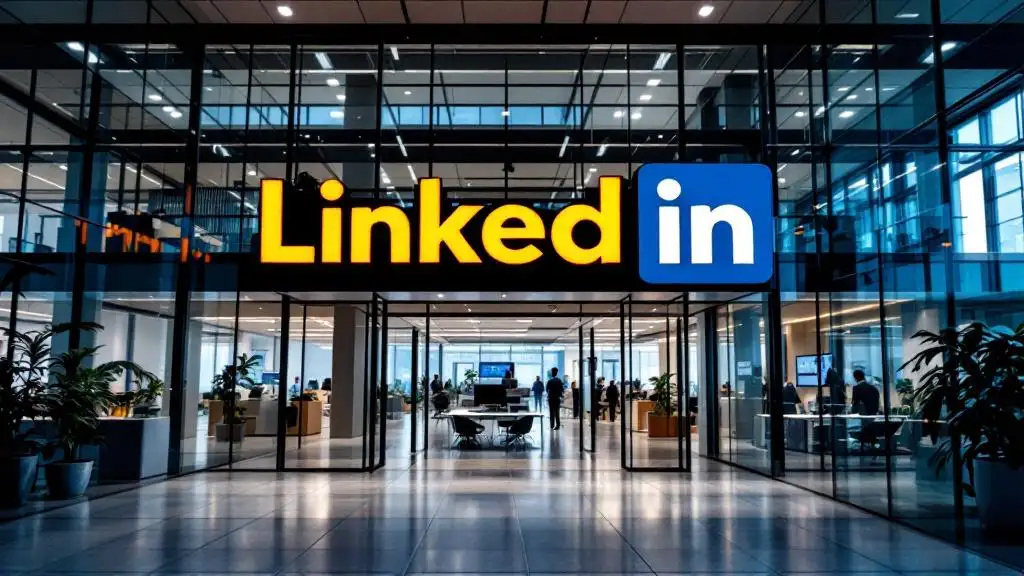Increase Organic Traffic Today: 12 Actionable Image SEO Tips Revealed
To maximize the visibility and organic traffic to your website, it is essential to understand the basics of image SEO and the importance of image optimization.


Increase Organic Traffic Today: 12 Actionable Image SEO Tips Revealed
Image SEO Basics
To maximize the visibility and organic traffic to your website, it is essential to understand the basics of image SEO and the importance of image optimization.
Understanding Image SEO
Image SEO refers to the optimization of images to increase traffic from search engines. It involves implementing various techniques to improve the visibility of images in search engine results and attract more visitors to your website. By optimizing your images, you can enhance your website's overall SEO strategy and make it more accessible to a wider audience.
According to Source, Google Image searches account for 22.6% of all searches, making image SEO a critical factor in driving organic traffic to your website. By optimizing your images, you can have a higher chance of ranking higher on Google Images and attracting clicks from users searching for relevant visual content.
Importance of Image Optimization
Image optimization plays a vital role in improving your website's overall SEO performance. Here are some key reasons why image optimization is crucial:
- Enhanced User Experience: Optimized images can improve the user experience on your website. When images are properly optimized, they load faster, reducing the overall page load time. This results in a better user experience, as visitors can access your content quickly and easily.
- Improved Accessibility: Alt text, which is a concise description of an image, plays a crucial role in image optimization. Alt text ensures that everyone, including individuals with visual impairments who use screen readers, can benefit from the content on your webpage [1]. Alt text also provides a better user experience for those on low bandwidth connections, as it allows them to understand the content of images that may fail to load.
- Increased Organic Traffic: Properly optimized images can drive more organic traffic to your website. When you optimize your images with relevant keywords, descriptive file names, and alt text, search engines can better understand the context and relevance of your images. This improves your chances of ranking higher in image search results, attracting more clicks, and driving organic traffic.
- Improved Website Performance: Optimized images contribute to overall website performance. By reducing the file size of images without compromising quality, you can minimize the amount of data that needs to be transferred, resulting in faster loading times. This is particularly important for mobile users who may have limited data plans or slower internet connections.
Understanding image SEO and the importance of image optimization provides a solid foundation for maximizing organic traffic to your website. By implementing effective image SEO strategies, you can enhance user experience, improve website accessibility, and increase your visibility in search engine results. In the following sections, we will explore various techniques and best practices for optimizing images to further boost your website's SEO performance.
Optimizing Alt Text
When it comes to image SEO, optimizing the alt text of your images plays a crucial role in improving accessibility, user experience, and driving organic traffic. Alt text, short for alternative text, is a concise description of an image that is read by screen readers for users with visual impairments. Let's delve into the role of alt text and explore some best practices for optimizing it.
Role of Alt Text
Alt text serves three important purposes. Firstly, it ensures that your visual content is accessible to all users, including those with visual impairments who rely on screen readers to interpret web content. By providing a descriptive alt text, you enable people with disabilities to understand the context and meaning of the images on your website.
Secondly, alt text enhances user experience in cases where images fail to load. Users on low bandwidth connections or with browser settings that disable image rendering can still comprehend the content of the image through the alt text. This improves the overall user experience and prevents information gaps when images are not visible.
Lastly, optimizing alt text can drive organic traffic to your website. Search engines like Google utilize alt text, along with computer vision algorithms and the context of the page, to understand the subject matter of images. By providing accurate and descriptive alt text, you increase the chances of your images appearing in relevant search results, leading to more organic visitors.
Best Practices for Alt Text
To optimize your alt text effectively, consider the following best practices:
- Be descriptive: Describe the content and context of the image accurately in a concise manner. Use relevant keywords that align with the image and the surrounding content. However, avoid keyword stuffing or using irrelevant keywords solely for SEO purposes.
- Be specific: Provide specific details that capture the essence of the image. Instead of using generic alt text like "image001.jpg," opt for descriptive alt text such as "smiling woman holding a bouquet of flowers."
- Keep it concise: Use clear and concise language to convey the meaning of the image. Aim for a maximum of 125 characters to ensure that the alt text remains informative without being overly verbose.
- Use proper punctuation: Use appropriate punctuation to improve readability and ensure that the alt text flows naturally. However, avoid using excessive punctuation marks or special characters.
- Avoid keyword stuffing: While it's important to include relevant keywords, avoid keyword stuffing or using excessive keywords in the alt text. Focus on providing an accurate and meaningful description that helps users and search engines understand the image.
By following these best practices, you can create alt text that enhances accessibility, improves user experience, and increases the likelihood of your images appearing in relevant search results. Remember to review and update alt text regularly to ensure its accuracy and alignment with the content and context of the images on your website.
Image File Optimization
When it comes to image SEO, optimizing image files is an important aspect that can greatly impact a website's visibility and ranking in search engine results. This section will cover two key aspects of image file optimization: naming image files and choosing the right image format.
Naming Image Files
Naming image files appropriately is crucial for search engine optimization. When renaming images, it provides an opportunity to incorporate relevant keywords without being penalized for keyword stuffing [2]. Using keyword-rich filenames can help improve a site's visibility in search results and attract organic traffic.
When naming image files, it is best to keep the filenames brief and descriptive, focusing on the core aspect of the picture [2]. Avoid overly long filenames and consider using abbreviations, except for widely recognized ones, to enhance SEO for images.
To improve search engine recognition and indexing, it is recommended to use hyphens to separate words in image file names. Search engines like Google interpret hyphens better than underscores or other separators, aiding in proper keyword recognition and indexing of images.
Choosing the Right Image Format
Selecting the appropriate image format is essential for image file optimization. It is advisable to use responsive, fast-loading, and smaller file-sized images to enhance website performance and SEO.
The widely supported image formats for the web are JPEG, PNG, and WebP. Each format has its own advantages and considerations. JPEG is commonly used for photographs and complex images as it provides a good balance between image quality and file size. PNG is suitable for images with transparency or simple graphics. WebP is a newer format that offers higher compression and smaller file sizes, but it may not be supported by all web browsers [3].
When optimizing images for the web, it is recommended to use online tools like Image Optimizer to resize and compress images efficiently. This helps to reduce the file size without significant loss of image quality, contributing to faster page load times and better SEO performance [4].
By carefully considering the naming of image files and choosing the appropriate image format, you can optimize your images for SEO and improve their visibility in search engine results. Remember to focus on descriptive filenames and use supported image formats that balance quality and file size for optimal web performance.
Advanced Image SEO Techniques
When it comes to image SEO, there are advanced techniques that can further optimize your images and improve your website's visibility in search engine results. Two key techniques to consider are creating image sitemaps and leveraging content delivery networks (CDNs).
Creating Image Sitemaps
Creating an image sitemap is an effective way to ensure that search engines properly index and display your images in search results. An image sitemap is a file that provides search engines with information about the images on your website, such as their location, captions, and other relevant details.
By including image-specific information in your sitemap, you increase the chances of your images being discovered and displayed by search engines. This can lead to increased organic traffic and visibility for your website. To create an image sitemap, you can use tools like Google Search Console or third-party plugins that generate sitemaps automatically.
Leveraging Content Delivery Networks
Leveraging a content delivery network (CDN) is another advanced technique that can benefit your image SEO efforts. A CDN is a network of servers located in various geographical locations that store and deliver static website content, including images, to users based on their location.
By using a CDN, you can improve the loading speed of your website, including image-heavy pages. When a user visits your website, the CDN serves the images from the server closest to their location, reducing latency and improving overall user experience. Faster page load times not only enhance user engagement but also have a positive impact on search engine rankings.
CDNs work by distributing the load of delivering content across multiple servers, allowing for efficient and speedy content delivery. Popular CDN providers include Cloudflare, Amazon CloudFront, and Akamai.
By creating image sitemaps and leveraging CDNs, you can enhance your image SEO strategies and maximize the chances of your images appearing in search results. These advanced techniques contribute to improving website visibility, increasing organic traffic, and optimizing user engagement. Remember to implement best practices for image optimization, such as using descriptive alt text and properly naming image files, to further enhance your image SEO efforts.
Impact of Image SEO on Organic Traffic
Implementing effective image SEO strategies can have a significant impact on the organic traffic your website receives. By optimizing your images for search engines, you can increase website visibility and improve user engagement.
Increasing Website Visibility
Google Image searches account for a substantial portion of all searches, making image SEO a crucial aspect of your overall SEO strategy. When you optimize your images, they have a better chance of appearing in relevant search results, thereby increasing the visibility of your website.
One of the key elements of image SEO is optimizing the alt text. Alt text plays a crucial role in getting your images ranked on Google Images. It allows you to provide a concise description of the image content, helping search engines understand the context of your images and improving your site's SEO performance. Moreover, alt text ensures that everyone, including those with visual impairments who rely on screen readers, can benefit from the content on your webpage.
By optimizing your alt text, you increase the chances of your images being discovered by a wider audience, leading to more organic traffic to your website. For instance, HubSpot's blog team was able to increase image traffic by an impressive 779% in less than a year simply by optimizing their image alt text [1].
Improving User Engagement
Image SEO not only enhances website visibility but also improves user engagement. When users come across visually appealing and relevant images, they are more likely to stay on your website longer, explore your content, and interact with your brand.
Optimized alt text and image file names contribute to a better user experience. Alt text allows users on low bandwidth connections to understand the content of images that may fail to load, ensuring they still receive valuable information [1]. By providing alt text that accurately describes the image, you enable users to comprehend the visual elements of your website, even if they cannot see the images themselves.
Furthermore, high-quality and optimized images can enhance the overall aesthetics of your website, making it more visually appealing and engaging for users. This can lead to increased time spent on your website, lower bounce rates, and a higher likelihood of users sharing your content with others.
By focusing on image SEO and optimizing your images for search engines, you can improve both website visibility and user engagement. Implementing best practices for alt text optimization and strategic image file naming can help you attract more organic traffic, enhance the user experience, and ultimately drive the success of your website.
Key Factors for Image SEO Success
When it comes to image SEO, there are certain key factors that play a crucial role in optimizing your images for search engines. Two important elements to focus on are alt text optimization and image file name strategies.
Alt Text Optimization Tips
Alt text, or alternative text, is a brief description of an image that is displayed when the image fails to load or for users who rely on screen readers to navigate the web. Alt text is crucial for three main reasons: accessibility, user experience, and image traffic [1].
To optimize your alt text for SEO success, consider the following tips:
- Be Descriptive: Provide a concise and informative description of the image, using relevant keywords where appropriate. This helps search engines understand the content of the image and increases the chances of the image appearing in search results.
- Maintain Relevance: Ensure that the alt text accurately reflects the content of the image and its context within the webpage. Avoid keyword stuffing and focus on providing value to the user.
- Keep it Concise: Aim for alt text that is concise but still descriptive enough to convey the meaning of the image. Ideally, keep it under 125 characters to ensure it is fully visible in search results.
Optimizing alt text can have a significant impact on image traffic and organic visitors. For example, HubSpot's blog team increased their image traffic by 779% in less than a year through alt text optimization, resulting in 160,000 more organic views [1].
Image File Name Strategies
The file name of an image also plays a role in image SEO. It significantly affects a webpage's SEO and image content ranking. Using descriptive keywords in the image file name can help search engines understand the image better and improve its chances of appearing in search results.
Consider the following strategies when naming your image files for SEO purposes:
- Be Descriptive: Use descriptive keywords that accurately represent the content of the image. For example, instead of naming an image "horse135.jpg," opt for a more descriptive name like "horse-riding-in-a-meadow.jpg." This not only helps search engines but also provides users with a better understanding of the image's context.
- Maintain Relevance: Ensure that the image file name aligns with the overall content and theme of the webpage. Avoid generic names or numbers that do not provide any meaningful information.
- Use Web-Friendly Formats: Save your images in widely supported and web-friendly formats such as JPEG, PNG, or WebP. These formats strike a balance between image quality and file size, contributing to faster page load times, an essential factor for SEO.
By following these alt text optimization tips and image file name strategies, you can improve the visibility of your images in search results, enhance user experience, and increase organic traffic to your website.
References
[1]: https://blog.hubspot.com/marketing/image-alt-text
[2]: https://delante.co/does-image-name-affect-seo/
[3]: https://cloudinary.com/guides/web-performance/8-image-seo-optimization-tips-to-improve-your-search-rankings
[4]: https://www.teamlewis.com/magazine/how-to-name-images-for-seo/







